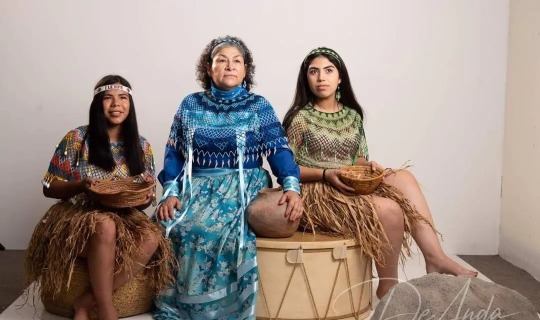#cocopa
Text









#pretty sure these came from that cocopa app#old internet#old web#2000s internet#animecore#otakucore#weebcore#2000s anime#glitter graphics#blinkies#webcore#gyaru#gyarucore#gyaru aesthetic#strawberrycore#strawberry#app icon#app icons
4K notes
·
View notes
Text
extra!
When it comes to the 5 coin play on gachas, it only is really worth it if it’s a coin gacha. It’s not really worth it to spend your coins on a ticket gacha.
The “100 coins for 30 48-hour gacha tickets” is a pretty good deal, but I only recommend you to buy it if you really need gacha tickets and you have the coins to do it (and you don’t have any other gachas you want to spend your coins on).
Only the free play is really worth it in the lucky slot, unless you really need event items and you don’t mind spending your coins on them(keep in mind that the drop rates for coins are low)
1 note
·
View note
Text
By: Malcolm Clark
Published: Jul 18, 2023
The LGBT movement is beginning to behave more like a religious cult than a human-rights lobby. It’s not just the Salem-like witch hunts it pursues against its critics. It’s also its flight from reason and its embrace of magical thinking.
This irrationalism is best illustrated by its recent embrace of the term ‘two-spirit’ (often shortened to ‘2S’), which in North America has been added to the lobby’s ever-growing acronym, meaning we are now expected to refer to – take a deep breath – the ‘2SLGBTQQIA+ community’.
The term two-spirit was first formally endorsed at a conference of Native American gay activists in 1990 in Winnipeg in Canada. It is a catch-all term to cover over 150 different words used by the various Indian tribes to describe what we think of today as gay, trans or various forms of gender-bending, such as cross-dressing. Two-spirit people, the conference declared, combine the masculine and the feminine spirits in one.
From the start, the whole exercise reeked of mystical hooey. Myra Laramee, the woman who proposed the term in 1990, said it had been given to her by ancestor spirits who appeared to her in a dream. The spirits, she said, had both male and female faces.
Incredibly, three decades on, there are now celebrities and politicians who endorse the concept or even identify as two-spirit. The term has found its way into one of Joe Biden’s presidential proclamations and is a constant feature of Canadian premier Justin Trudeau’s doe-eyed bleating about ‘2SLGBTQQIA+ rights’.
The term’s success is no doubt due in part to white guilt. There is a tendency to associate anything Native American with a lost wisdom that is beyond whitey’s comprehension. Ever since Marlon Brando sent ‘Apache’ activist Sacheen Littlefeather to collect his Oscar in 1973, nothing has signalled ethical superiority as much as someone wearing a feather headdress.
The problem is that too many will believe almost any old guff they are told about Native Americans. This is an open invitation to fakery. Ms Littlefeather, for example, may have built a career as a symbol of Native American womanhood. But after her death last year, she was exposed as a member of one of the fastest growing tribes in North America: the Pretendians. Her real name was Marie Louise Cruz. She was born to a white mother and a Mexican father, and her supposed Indian heritage had just been made up.
Much of the fashionable two-spirit shtick is just as fake. For one thing, it’s presented as an acknowledgment of the respect Indian tribes allegedly showed individuals who were gender non-conforming. Yet many of the words that two-spirit effectively replaces are derogatory terms.
In truth, there was a startling range of attitudes to the ‘two-spirited’ among the more than 500 separate indigenous Native American tribes. Certain tribes may have been relaxed about, say, effeminate men. Others were not. In his history of homosexuality, The Construction of Homosexuality (1998), David Greenberg points out that those who are now being called ‘two spirit’ were ridiculed by the Papago, held in contempt by the Choctaws, disliked by the Cocopa, treated by the Seven Nations with ‘the most sovereign contempt’ and “derided” by the Sioux. In the case of the Yuma, who lived in what is now Colorado, the two-spirited were sometimes treated as rape objects for the young men of the tribe.
The contradictions and incoherence of the two-spirit label may be explained by an uncomfortable fact. The two-spirit project was shaped from day one by complete mumbo-jumbo. The 1990 conference that adopted the term was inspired by a seminal book, Living the Spirit: A Gay Indian Anthology, published two years earlier. Its essays were compiled and edited by a young white academic called Will Roscoe. He was the historical adviser to the conference. And his work on gay people in Indian cultural history – a niche genre in the 1980s – had become the received wisdom on the subject.
Roscoe’s work had an unlikely origin story of its own. In 1979, he joined over 200 other naked gay men in the Arizona desert for an event dubbed the ‘Spiritual Conference for Radical Faeries’. It was here where he met Harry Hay, the man who would become his spiritual mentor and whose biography he would go on to write. The event was Hay’s brainchild and was driven by his conviction that gay men’s lives had become spiritually empty and dominated by shallow consumerism. For three days, Roscoe and the other men sought spiritual renewal in meditation, singing and classes in Native American dancing. There were also classes in auto-fellatio, lest anyone doubt this was a gay men’s event.
To say Hay, who died in 2002, was eccentric is to radically understate his weirdness. For one thing, he was a vocal supporter of paedophilia. As such, he once took a sandwich board to a Pride march proclaiming ‘NAMBLA walks with me’, in reference to the paedophilia-advocacy group, the North American Man / Boy Love Association. Hay also believed that gay men were a distinct third gender who had been gifted shamanic powers. According to Hay, these powers were recognised and revered by pre-Christian peoples, from Ancient Greece to, you guessed it, the indigenous tribes of North America.
For years, Hay had been experimenting with sweat lodges and dressing up in Indian garb in ways that would now be criticised as cultural appropriation. Despite this, Roscoe took Hay’s incoherent thesis – that gender-bending and spiritual enlightenment go hand in hand – and turned it into a piece of Native American history.
Unsurprisingly, given its provenance, Roscoe’s work is full of holes and lazy assumptions. To prove that two-spirit people combine the feminine and masculine spirits, Roscoe searched for evidence of gender non-conforming behaviour among the Indian tribes. The problem was that he had to mainly rely on the accounts of white settlers who had little understanding of Native cultures. And even when he didn’t rely on those sources, Roscoe still jumped to the wrong conclusions.
Take, for example, the case of Running Eagle, ‘the virgin woman warrior’ of the Blackfeet tribe, whom Roscoe was the first to label as two-spirit. As a girl, she rebelled against the usual girl chores and insisted on being taught how to hunt and fight. She became a noted warrior and declared she would never marry a man or submit to one.
Of course, none of this really means that Running Eagle was two-spirit, or that the tribe she hailed from was made up of LGBT pioneers. It merely shows that the Blackfeet were smart and adaptable enough to recognise martial talent in a girl and were able to make good use of a remarkable individual. Nevertheless, Roscoe’s description of her has become gospel and Running Eagle is now endlessly cited as an example of a two-spirit.
This is a mind-numbingly reductive approach. It’s based on the presumption that what we think of as feminine and masculine traits are fixed and stable across time and cultures. It dictates that no Native American man or woman who ever breaks a gender taboo or fails to conform to expectations can be anything but two-spirit. This is gender policing on steroids.
The two-spirit term also does Native American cultures a deep disservice. It assumes that 500 different tribes were both homogenous and static. As journalist Mary Annette Pember, herself Ojibwe, argues, it also erases ‘distinct cultural and language differences that Native peoples hold crucial to their identity’.
In some ways, it is entirely unsurprising that the wayward ‘2SLGBTQQIA+’ movement has fastened on to two-spirit, an invented term with a bogus pedigree. Far from paying tribute to Native American cultures in all their richness, it exploits them to make a cheap political point. Harry Hay and his fellow auto-fellators would be proud.
==
"Two spirit" is a great way of fabricating an interesting identity when you don't have one. And you can scream at people as "bigots," but without the guilt of lying about your great-grandparents being descendants of Sacagawea.
The fake mysticism goes along neatly with the notion of disembodied sexed thetans ("gender identity") which become trapped between worlds in the wrong meat bodies.
#Malcolm Clark#two spirit#pretendians#native american#native american culture#noble savage#narcissism#narcissistic personality disorder#2SLGBTQ#gender ideology#queer theory#cultural appropriation#religion is a mental illness
65 notes
·
View notes
Text
The cucapá, centenary survivors from the north of the country
One of the original peoples of America, the cucapá, survive in small numbers in Baja California and Sonora. But who are they?
According to the Cultural Information System of the Government of Mexico, Cucapa, Cucapá, Cocopa, Cucapah and Cocopah are all accepted names to designate this indigenous group or American people, as well as their language, which they call koipai and whose meaning is ”…

View On WordPress
0 notes
Text
En esta página podemos encontrar que en 1996 el EZLN junto con el gobierno federal a través de Comisión para la Concordancia y Pacificación (COCOPA) firmaron los Acuerdos de San Andrés sobre Derechos y Cultura Indígena. En estos acuerdos, el gobierno federal se comprometía a solucionar las demandas por parte de los indígenas modificando la constitución y legislando a favor de la autonomía de los pueblos y sus derechos culturales y políticos.
En cuestión de los recursos naturales y el medio ambiente, fue uno de los temas que se formó en los Acuerdos. El EZLN menciona que la intención del gobierno por subsanar los daños que se causaron en los territorios indígenas a través de las indemnizaciones era insuficiente. Exigieron que lo necesario era: “desarrollar una política de verdadera sustentabilidad, que preserve las tierras, los territorios y los recursos naturales de los pueblos indígenas, en suma, que contemple los costos sociales de los proyectos de desarrollo” En otras palabras, la demanda de los zapatistas no solo era una política de reparación de daños por parte del gobierno, sino una iniciativa para la autonomía en donde los pueblos pudieran decidir sus formas de gestionar sus recursos naturales (aguas, bosques, selvas y suelos).
Los Acuerdos se han convertido en un gran símbolo de traición hacia los pueblos indígenas. Otro quiebre en la historia de la negociación y disputa entre el Estado y los pueblos indígenas, “la actual crisis ambiental global, la lucha de los pueblos indígenas organizados por la autonomía en la gestión y conservación de los recursos naturales, es un elemento fundamental para comprender las problemáticas socioambientales y trazar caminos alternativos en la urgente misión de proteger la naturaleza en un mundo donde impera la desigualdad.”
García, A. F. (2021, February 16). Las demandas ambientales de los pueblos indígenas y los Acuerdos de San Andrés . Tierra Adentro. https://www.tierraadentro.cultura.gob.mx/las-demandas-ambientales-de-los-pueblos-indigenas-y-los-acuerdos-de-san-andres/
0 notes
Photo

i made something
122 notes
·
View notes
Text

In loving memory of our sweet Cocopa, she did her best 💕
47 notes
·
View notes
Photo

Funhaus - #JusticeForCocopa
*Should say - 忘れません
7 notes
·
View notes
Photo

An aged Cocopa woman said to be more than 100 years old - Gill - 1900
13 notes
·
View notes
Text

5 notes
·
View notes
Text
cocoppa event list
(discontinued ones)
-fashion labo
-sugoroku event
-top brand
-pot event
(current and actives ones)
-catch event
-delivery event
-style wars (club event or SW)
-snap contest
[that is the order in which they appear every month]
0 notes
Text





Doodles 🖤 🕳️ 🖤
#my art#Black#Black doodles#🖤#Doodles#Splatoon#Cocopa dress#Tsuki Sakurada#o.c#danganronpa o.c#Tsubasa Saotome
3 notes
·
View notes
Photo

I thought I had seen all the colors in the spectrum, until I came to Japan. #landscape #professionalphotography #golf #gogolffi #landscapephotography #colors #hasselbladimages #hasselblad #nofilter #cocopa #hakusan #travelnow #workmode #colors🎨 #japan #japanese #mountains #paradise (paikassa Cocopa Resort Club Hakusan Village Golf Course)
#landscapephotography#professionalphotography#cocopa#travelnow#mountains#paradise#japanese#workmode#landscape#nofilter#colors🎨#hakusan#hasselblad#hasselbladimages#colors#golf#japan#gogolffi
1 note
·
View note
Note
Hmm buddy do you play cocopa?
cocoppa? actually I was Obsessed with it when I was younger yeah!! I don't know if I'd be able to get my old account, I didn't know the game was still running actually!!
here's a pic of my fav look I ever did that I still love a lot, hehe

4 notes
·
View notes
Video
youtube
Native I Am, Cocopa (V3), Poem by Michael Lee Johnson. This is the story poem of the Cocopah Indian tribe and their journey over the years. “The River People descended from the greater Yuman-speaking area, which occupied lands along the Colorado River, and the Cocopah Indian tribe had no written language. However, historical records have been passed on orally and by outside visitors.” Michael Lee Johnson lived ten years in Canada, Vietnam era. Today he is a poet in Itasca, DuPage County, Illinois, published in 2,013 small press magazines in 40 countries; 224 YouTube poetry videos. Mr. Johnson has been writing poetry since 1968 off and on. He tends to like animals more than human beings. Poetry used to be personal therapy, now poetry is enjoyment. Years ago, he was in social work and moved on to advertising and marketing, running his own business at 73 years of age. He has been nominated for 2 Pushcart Prize awards poetry 2015/1 Best of the Net 2016/2 Best of the Net 2017, 2 Best of the Net 2018.
6 notes
·
View notes